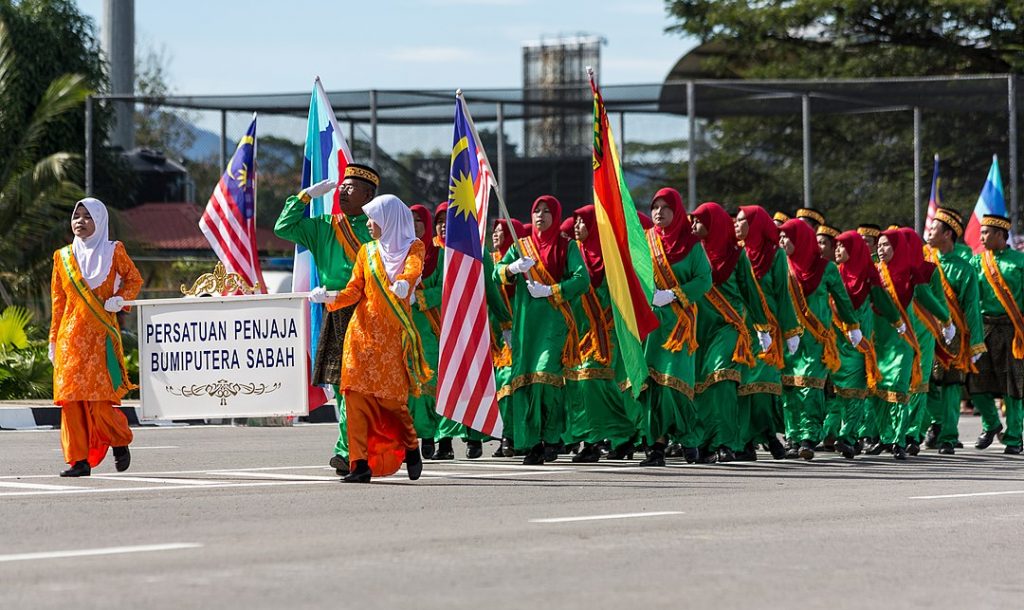Malaysia’s New Economic Policy (NEP) was introduced and tabled in Parliament more than 50 years ago, looming out of the 1969 racial riots. It was an ambitious, but contentious, project of socio-economic engineering, which has shaped and transformed the contours of Malaysia’s political economy. Although the NEP formally ended in 1990, its two-pronged objectives of eradicating poverty irrespective of race and eliminating the identification of race with economic function continue to be central to policy architecture today.
In recent years, Malaysia finds itself deep in another crisis, this time from the triple whammy of health, economic and political shocks. The much-disputed declaration of emergency to address the crisis ended on 1 August 2021, but no such encompassing, path-breaking policy ala NEP seems to be forthcoming in its aftermath. In fact, the NEP, has been castigated for the political malaise and social fracture facing Malaysia today and according to a local radio host, ”has left a sour taste in the mouth of many Malaysians”.
In the last year, reflections on the NEP at 50 have been few and far between: understandably so, as the nation was fighting for lives and livelihoods, while analysts were wearied by years of repeating the same tropes. The few commentaries and interviews that have emerged reflect the polarised assessments of the NEP, ranging from associating the policy with institutional racism, raising legitimate concerns regarding patronage politics, lamenting how a well-crafted policy has mutated over time, to defending its relevance amid persistent racial inequalities and wealth concentration.
Lee Hwok Aun, Senior Fellow at the ISEAS-Yusof Ishak Institute, provides a measured view of the NEP at 50 and a detailed account of the historical processes underpinning the formulation and evolution of this overarching policy. At the heart of his arguments is the importance of maintaining a conceptual distinction between the NEP’s two prongs, while not losing sight of their overlaps. However, more could be said about this tension between distinctions and overlaps.
While conflation of the two prongs has admittedly led to many misguided prescriptions in the form of “needs-based affirmative action”, the lack of emphasis on their inter-relations precipitates an under-appreciation of how the disadvantages that Bumiputeras faced are essentially rooted in the same racialised socio-economic processes.
The NEP’s first prong of eradicating poverty irrespective of race (my emphasis) implies that poverty can be confronted in a race-blind manner. But helping the poor regardless of race does not mean that poverty is a raceless phenomenon. The poverty of Malay fishermen, Indian estate workers, Chinese New Village residents, Penans in Sarawak, Rungus in Sabah—to name a few communities—all stemmed from a historically constituted process of their socio-economic positions being racialised in particular ways. While poverty is often statistically measured and constructed in a non-racial manner at the household level, the predicaments of the poor must be situated in an understanding of group-based processes, which embed the poor in exploitative and often racialised social relations.
On the other hand, the NEP’s second prong of eliminating the identification of race with economic function usually translates into attaining racial balance in different economic spheres to reflect the national racial composition (my emphases). But this conflation needs to be further unpacked. Can racial representation and diversity eliminate the identification of race with economic function, when race, as a criterion, is precisely the factor that heightens racial awareness? Is eliminating the identification of race with economic function a well-crafted objective in the first place, as a response to the racial-economic hierarchy produced by colonialism? Should racial balance be confined to representation of racial bodies without encompassing plurality of socio-cultural expressions in these economic spaces?
The point here is that the NEP, at its inception, may have conceptually distinguished the two prongs with different policy tools to address disadvantages experienced by Bumiputeras, but these disadvantages stemmed from the same racial processes affecting a broad group of Bumiputeras who shared similar socioeconomic conditions in the early years of independence. These racial processes were manifested in different forms of disadvantages, ranging from widespread poverty to under-representation in “modern” economic sectors.
However, over time, the NEP and its afterlife have contributed to the unequivocal growth of the Bumiputera middle class and expanded—not without controversy—the Bumiputera elite class in Malaysia. While the conspicuous presence of these middle and elite classes does point to the decoupling of race and class to some extent, their mere presence also mystifies the fact that there is a sizeable group of Bumiputeras whose disadvantages are still underpinned by persistent racialisation of the socio-economic system. This originated from colonialism, but has likely evolved into different and subtler forms today.
I contend that it is in recentring the discourse on the embodied, racial experiences of this group of disadvantaged Bumiputeras that the NEP can be reconsidered afresh. My recent paper focuses on postcolonial subjectivities surrounding affirmative action in Malaysia, foregrounding the voice of Malay Bumiputera youths. Based on in-depth interviews, I find that despite differences in racial identity modes and social attitudes towards affirmative action, these subjectivities share the same characteristic of being detached from the colonial origins of the racial-economic hierarchy.
As a result, the reproduction of these subjectivities perpetuates the myth that the primary function of affirmative action is to address individual deficits rather than systemic disadvantages shaped by the enduring effects of colonial legacies. The racialised socioeconomic ladder is something to be scaled but not something to be deconstructed and decolonised. Affirmative action is perceived as an agenda of advancing economic attainment to reduce racial inequality, defined in terms of resource differences between groups. However, affirmative action is fundamentally rooted in the need to restructure a set of inherited social relations, underpinned by a racialised socioeconomic ladder, which are not only inhibiting economic attainment but preventing new social relations from emerging.
A new report analyses debates around social cohesion and a failed proposal for a National Harmony Commission in Malaysia in light of Pakatan Harapan's collapse
National harmony: race, politics and campaigning in Malaysia
Therefore, the individualisation of group-based disadvantages shifts the gaze away from colonial hierarchies, categories and social relations, relegating them to the past, when research on coloniality often points to persistent but mystified links between the past and present. The problems of disadvantaged Bumiputeras are reduced to either a race or class issue, rather than conceptualised as a set of postcolonial relations perpetuating intersectional disadvantages for many Bumiputeras—in which inherited hierarchies and categories continue to obscure their enduring inequalities.
This is where the less-acknowledged anticolonial elements of the NEP need to be further developed. The NEP is often seen as expanding on, and hence continuous from, the constitutional provision of affirmative action. But it is also important to consider how the NEP breaks from the affirmative action regime in the preceding period. The NEP attributed racial imbalances to “colonial policies” and “economic development during the colonial era”. In aiming to restructure the racial-economic hierarchy as a colonial legacy, the NEP recognised the dominance and control of foreign capital in the economy, established clear targets to reduce foreign ownership and ushered in the shift away from laissez-faire capitalism.
While this does not mean that the NEP got it all correct in its deconstruction of the postcolonial situation in Malaysia, it suggests that there is potential to recover the discourse on coloniality lodged within the NEP. The structures of power, control and hegemony in the global economic order provoke the question of whether affirmative action in Malaysia can be adequately understood at the level of the nation-state without also situating affirmative action at different scales, from coloniality underpinning the international political economy to the domestic spaces that give rise to identity formation.
As we reflect on the NEP today, seeing it from the standpoint of a fractured nation and a lacklustre economy, there is no avoiding the fact that the enduring inequalities of disadvantaged Bumiputeras must be confronted with fresh perspectives. A new conception of justice rooted in the intersectional, racial experiences of disadvantaged Bumiputeras can establish the affirmative action agenda with a more compelling moral force and provides the impetus for the agenda to be reimagined, reclaimed and reconstructed in more effective and relevant ways.
 Facebook
Facebook  Twitter
Twitter  Soundcloud
Soundcloud  Youtube
Youtube  Rss
Rss 



